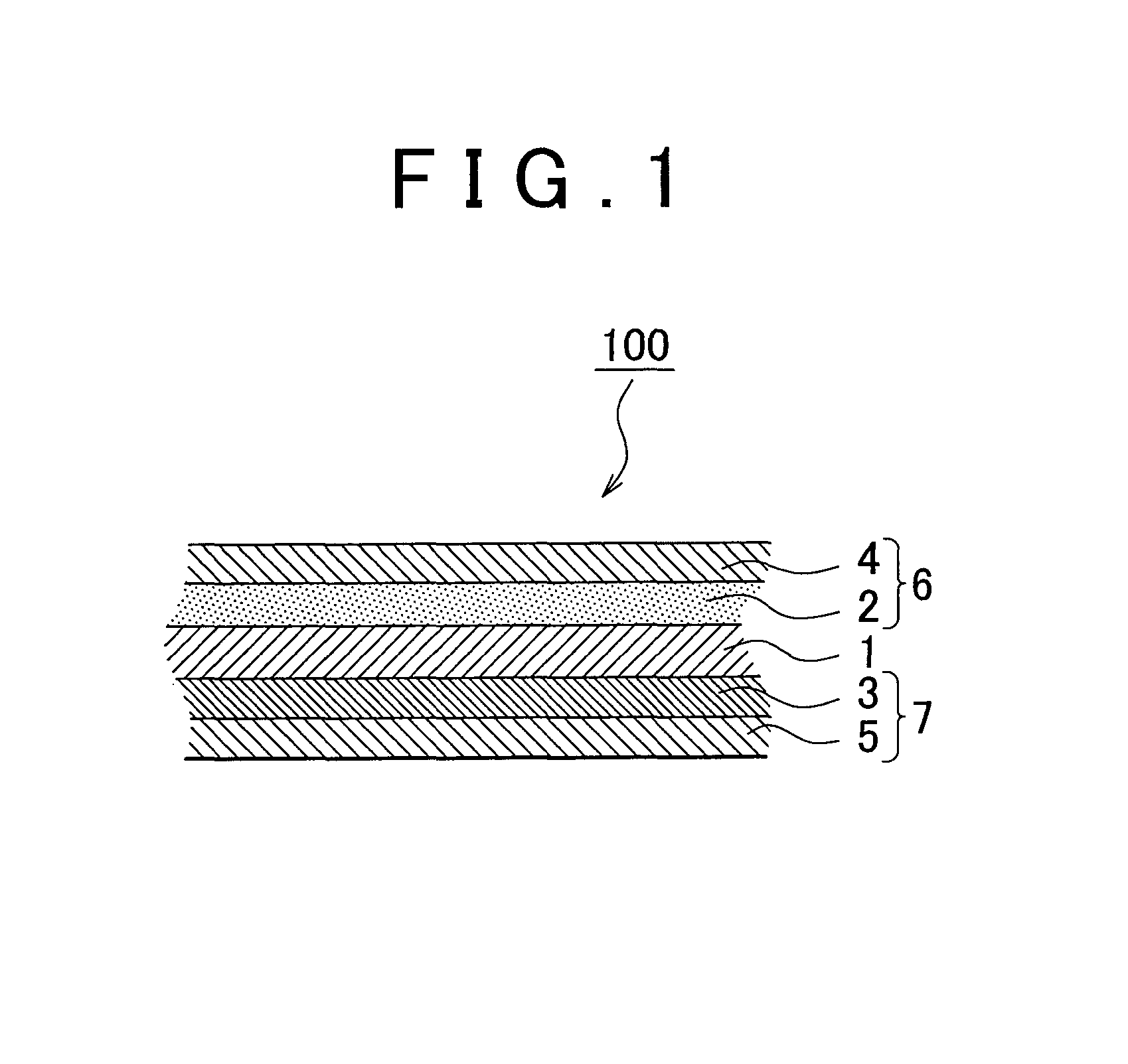Garnet-type solid electrolyte, secondary battery containing garnet-type solid electrolyte, and method of producing garnet-type solid electrolyte
a garnet-type ceramic and solid electrolyte technology, which is applied in the field of garnet-type solid electrolyte, secondary battery containing garnet-type solid electrolyte, and method of producing garnet-type solid electrolyte, can solve the problems of inadequate development of crystal faces of garnet-type ceramic described in jp-, 045019, etc., and achieves fewer crystal defects and higher crystallinity.
- Summary
- Abstract
- Description
- Claims
- Application Information
AI Technical Summary
Benefits of technology
Problems solved by technology
Method used
Image
Examples
example 1
[0090]First, each of the following were prepared and dry mixed with a mortar to uniformity: 10.755 g lithium hydroxide monohydrate (LiOH.H2O) as the lithium-containing compound, 0.894 g lanthanum(III) oxide (La2O3) as the lanthanum-containing compound, 0.452 g zirconium(IV) oxide (ZrO2) as the zirconium-containing compound, and 0.963 g sodium chloride (NaCl) as auxiliary flux. Thus, mixing was carried out such that a molar ratio among the lithium, lanthanum, and zirconium elements satisfies Li:La:Zr=140:3:2. The amount of the lithium hydroxide monohydrate used that was in excess over the stoichiometric amount required for the synthesis of Li7La3Zr2O12 serves as a flux. The amount of lithium hydroxide monohydrate serving as a flux is 10.755×{(140−7) / 140}=10.217 g. When the mass of the entire mixture is 100 mass %, the content of the compounds acting as a flux in this mixture is therefore (0.963+10.217) / (10.755+0.894+0.452+0.963)=85.6 mass %. The mixture was then placed in a crucible,...
PUM
| Property | Measurement | Unit |
|---|---|---|
| molar ratio | aaaaa | aaaaa |
| molar ratio | aaaaa | aaaaa |
| particle diameter | aaaaa | aaaaa |
Abstract
Description
Claims
Application Information
 Login to View More
Login to View More - R&D
- Intellectual Property
- Life Sciences
- Materials
- Tech Scout
- Unparalleled Data Quality
- Higher Quality Content
- 60% Fewer Hallucinations
Browse by: Latest US Patents, China's latest patents, Technical Efficacy Thesaurus, Application Domain, Technology Topic, Popular Technical Reports.
© 2025 PatSnap. All rights reserved.Legal|Privacy policy|Modern Slavery Act Transparency Statement|Sitemap|About US| Contact US: help@patsnap.com



